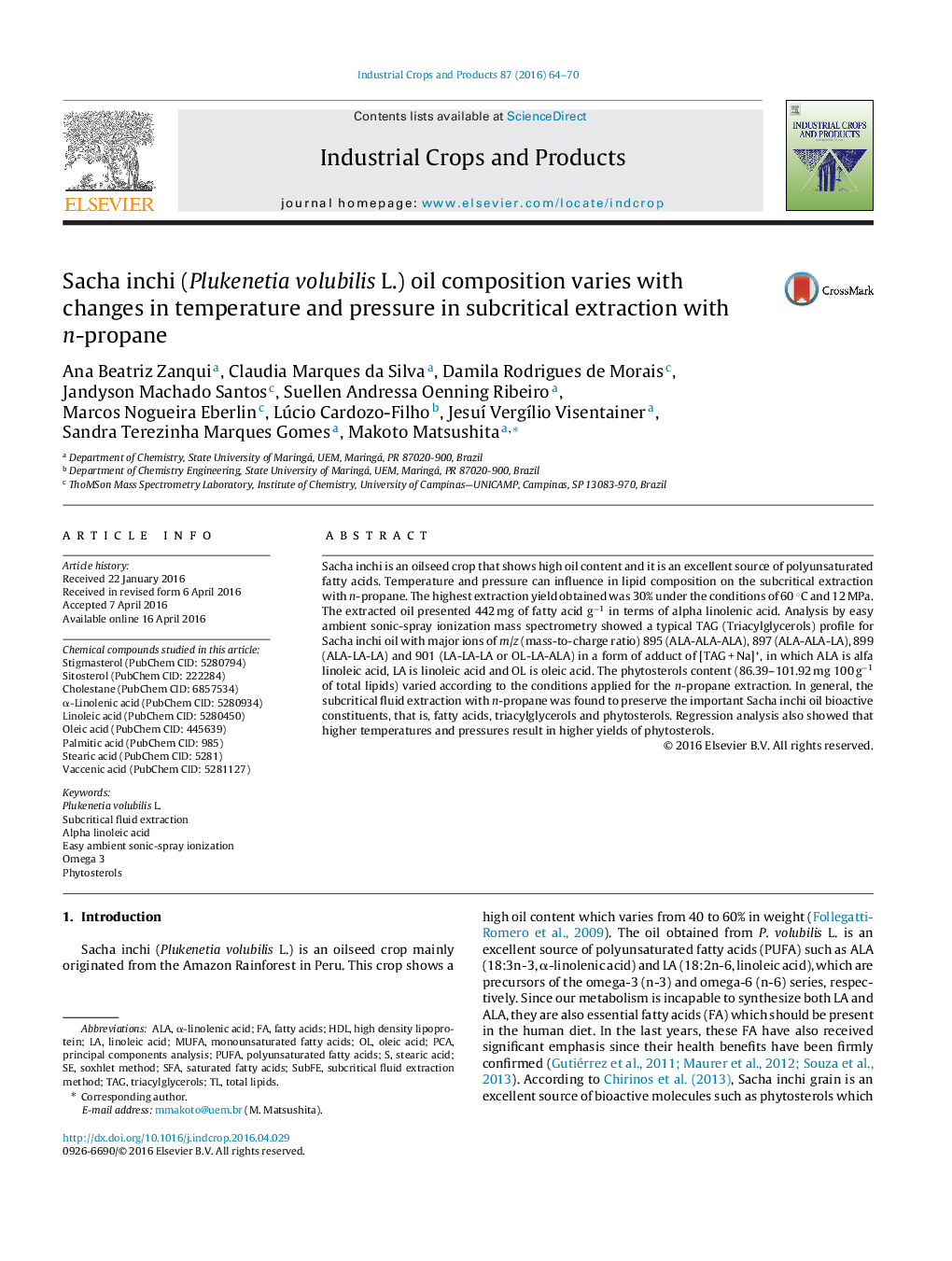| Article ID | Journal | Published Year | Pages | File Type |
|---|---|---|---|---|
| 4512229 | Industrial Crops and Products | 2016 | 7 Pages |
•Sacha inchi oil was obtained via subcritical n-propane extraction.•An average of 442 mg g−1 of alpha linolenic acid in oil was obtained.•Higher temperatures and pressures increase the phytosterols content.•The α-linolenic acid was the predominant triacylglycerol in Sacha oil.
Sacha inchi is an oilseed crop that shows high oil content and it is an excellent source of polyunsaturated fatty acids. Temperature and pressure can influence in lipid composition on the subcritical extraction with n-propane. The highest extraction yield obtained was 30% under the conditions of 60 °C and 12 MPa. The extracted oil presented 442 mg of fatty acid g−1 in terms of alpha linolenic acid. Analysis by easy ambient sonic-spray ionization mass spectrometry showed a typical TAG (Triacylglycerols) profile for Sacha inchi oil with major ions of m/z (mass-to-charge ratio) 895 (ALA-ALA-ALA), 897 (ALA-ALA-LA), 899 (ALA-LA-LA) and 901 (LA-LA-LA or OL-LA-ALA) in a form of adduct of [TAG + Na]+, in which ALA is alfa linoleic acid, LA is linoleic acid and OL is oleic acid. The phytosterols content (86.39–101.92 mg 100 g−1 of total lipids) varied according to the conditions applied for the n-propane extraction. In general, the subcritical fluid extraction with n-propane was found to preserve the important Sacha inchi oil bioactive constituents, that is, fatty acids, triacylglycerols and phytosterols. Regression analysis also showed that higher temperatures and pressures result in higher yields of phytosterols.
Graphical abstractFigure optionsDownload full-size imageDownload as PowerPoint slide
